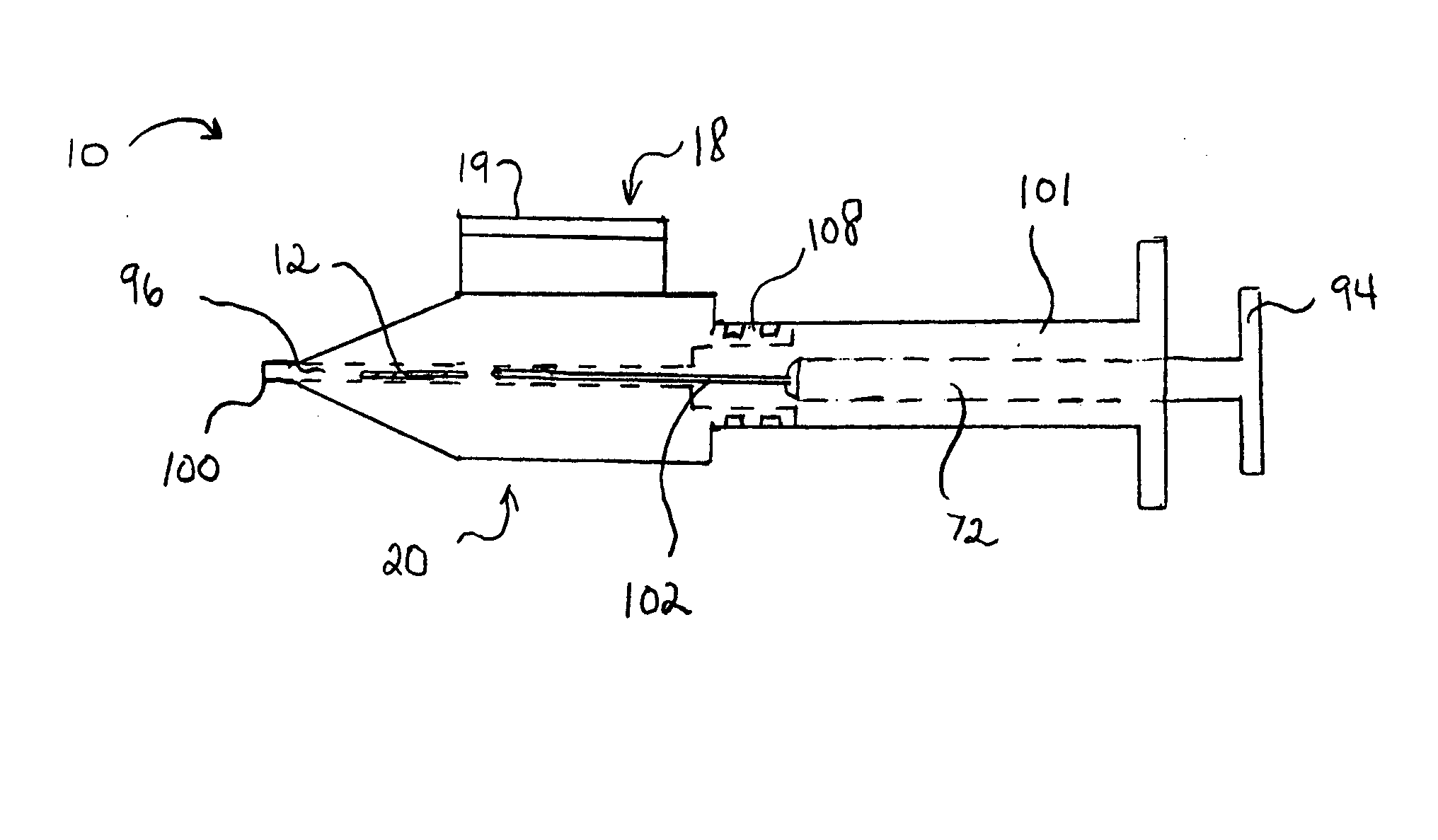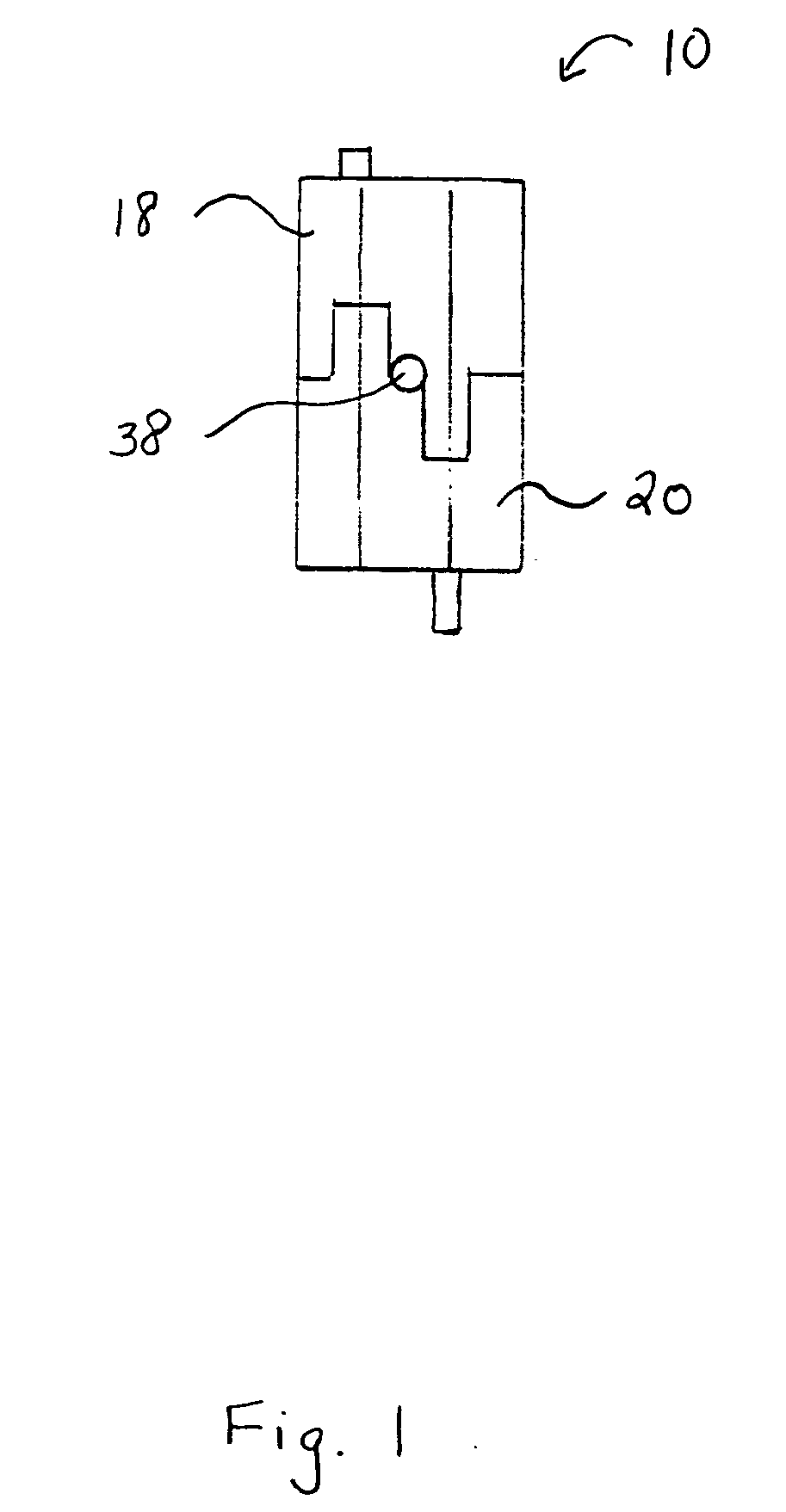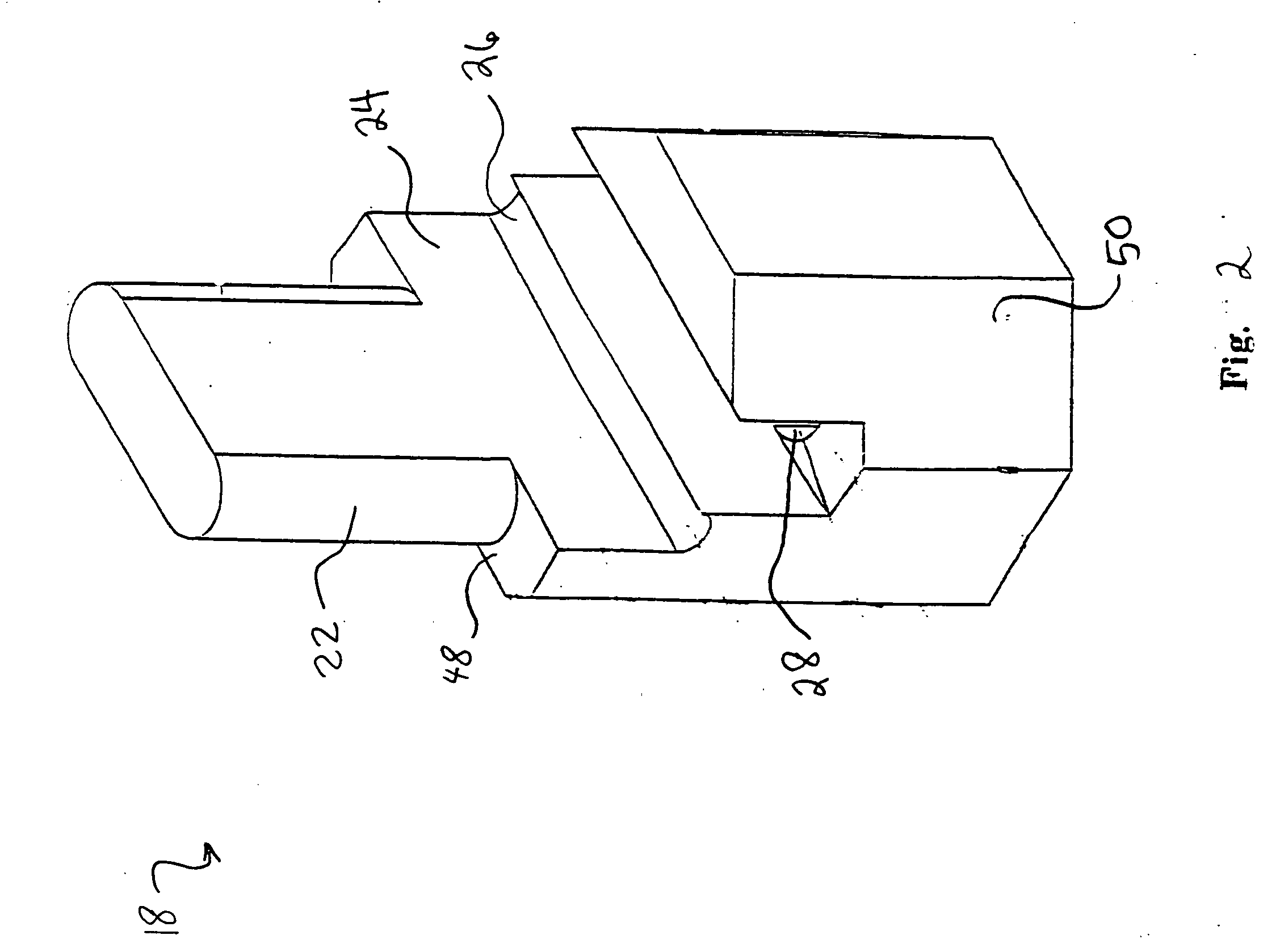Intraocular lens storage and insertion device and method of use thereof
- Summary
- Abstract
- Description
- Claims
- Application Information
AI Technical Summary
Benefits of technology
Problems solved by technology
Method used
Image
Examples
Embodiment Construction
[0046] The present invention relates to intraocular lenses formed of a material such as a hydrophilic acrylic, hydrophobic acrylic, silicone, co-polymer or other material that allows the intraocular lens (IOL) to be folded, rolled or otherwise deformed or compressed. The present invention is a device and method for rolling, deforming or compressing IOLs and positioning them for insertion into the eye of a patient.
[0047] Most intraocular lenses have a center thickness of approximately one millimeter or greater for a 20 diopter lens. The commonly known rolling instruments include instruments to compress the thicker lenses made of a soft, flexible material, which typically allows the thicker lenses to be implanted through an insertion having a size of four millimeters or less. Thicker lenses made of a soft, flexible material can be folded upon themselves and implanted. Such folding is shown in the teachings of Mazzocco and others.
[0048] The current invention rolls a very thin intraoc...
PUM
 Login to View More
Login to View More Abstract
Description
Claims
Application Information
 Login to View More
Login to View More - R&D
- Intellectual Property
- Life Sciences
- Materials
- Tech Scout
- Unparalleled Data Quality
- Higher Quality Content
- 60% Fewer Hallucinations
Browse by: Latest US Patents, China's latest patents, Technical Efficacy Thesaurus, Application Domain, Technology Topic, Popular Technical Reports.
© 2025 PatSnap. All rights reserved.Legal|Privacy policy|Modern Slavery Act Transparency Statement|Sitemap|About US| Contact US: help@patsnap.com



